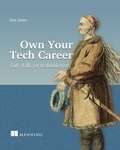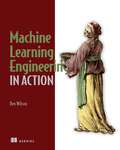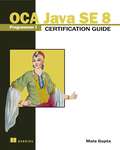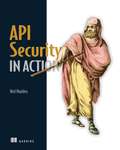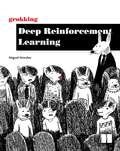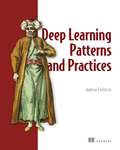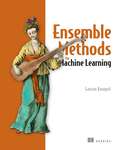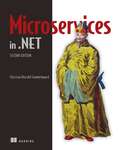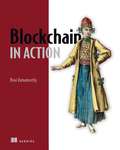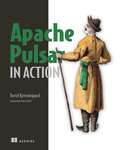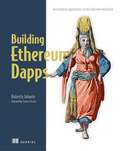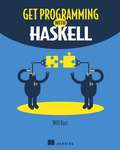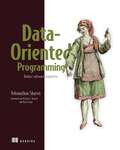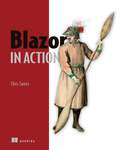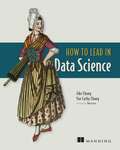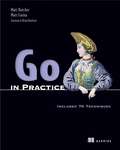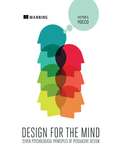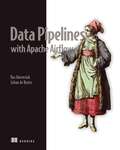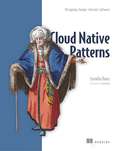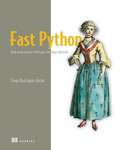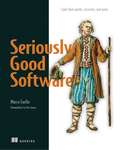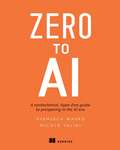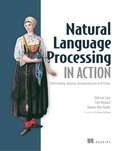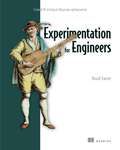- Table View
- List View
Own Your Tech Career: Soft skills for technologists
by Don JonesOwn Your Tech Career: Soft skills for technologists is a guide to taking control of your professional life. It teaches you to approach your career with planning and purpose, always making active decisions towards your goals.Summary In Own Your Tech Career: Soft skills for technologists, you will: Define what &“success&” means for your career Discover personal branding and career maintenance Prepare for and conduct a tech job hunt Spot speed bumps and barriers that can derail your progress Learn how to navigate the rules of the business world Perform market analysis to keep your tech skills fresh and relevant Whatever your road to success, you&’ll benefit from the toolbox of career-boosting techniques you&’ll find in Own Your Tech Career: Soft skills for technologists. You&’ll discover in-demand communication and teamwork skills, essential rules for professionalism, tactics of the modern job hunt, and more. Purchase of the print book includes a free eBook in PDF, Kindle, and ePub formats from Manning Publications. About the technology A successful technology career demands more than just technical ability. Achieving your goals requires clear communication, top-notch time management, and a knack for navigating business needs. Master the &“soft skills,&” and you&’ll have a smoother path to success and satisfaction, however you define that for yourself. About the book Own Your Tech Career: Soft skills for technologists helps you get what you want out of your technology career. You&’ll start by defining your ambition—whether that&’s a salary, a job title, a flexible schedule, or something else. Once you know where you&’re going, this book&’s adaptable advice guides your journey. You&’ll learn conflict resolution and teamwork, master nine rules of professionalism, and build the confidence and skill you need to stay on the path you&’ve set for yourself. What's inside Personal branding and career maintenance Barriers that derail progress The rules of the business world Market analysis to keep tech skills fresh About the reader For tech professionals who want to take control of their career. About the author Microsoft MVP Don Jones brings his years of experience as a successful IT trainer to this engaging guide. Table of Contents 1 Own your career 2 Build and maintain your brand 3 Network 4 Be part of a technology community 5 Keep your tech skills fresh and relevant 6 Show up as a professional 7 Manage your time 8 Handle remote work 9 Be a team player 10 Be a team leade 11 Solve problems 12 Conquer written communications 13 Conquer verbal communications 14 Resolve conflicts 15 Be a data-driven, critical thinker 16 Understand how businesses work 17 Be a better decision-maker 18 Help others 19 Be prepared for anything 20 Business math and terminology for technologists 21 Tools for the modern job hunt
Machine Learning Engineering in Action
by Ben WilsonField-tested tips, tricks, and design patterns for building machine learning projects that are deployable, maintainable, and secure from concept to production.In Machine Learning Engineering in Action, you will learn: Evaluating data science problems to find the most effective solution Scoping a machine learning project for usage expectations and budget Process techniques that minimize wasted effort and speed up production Assessing a project using standardized prototyping work and statistical validation Choosing the right technologies and tools for your project Making your codebase more understandable, maintainable, and testable Automating your troubleshooting and logging practices Ferrying a machine learning project from your data science team to your end users is no easy task. Machine Learning Engineering in Action will help you make it simple. Inside, you'll find fantastic advice from veteran industry expert Ben Wilson, Principal Resident Solutions Architect at Databricks. Ben introduces his personal toolbox of techniques for building deployable and maintainable production machine learning systems. You'll learn the importance of Agile methodologies for fast prototyping and conferring with stakeholders, while developing a new appreciation for the importance of planning. Adopting well-established software development standards will help you deliver better code management, and make it easier to test, scale, and even reuse your machine learning code. Every method is explained in a friendly, peer-to-peer style and illustrated with production-ready source code. About the technology Deliver maximum performance from your models and data. This collection of reproducible techniques will help you build stable data pipelines, efficient application workflows, and maintainable models every time. Based on decades of good software engineering practice, machine learning engineering ensures your ML systems are resilient, adaptable, and perform in production. About the book Machine Learning Engineering in Action teaches you core principles and practices for designing, building, and delivering successful machine learning projects. You'll discover software engineering techniques like conducting experiments on your prototypes and implementing modular design that result in resilient architectures and consistent cross-team communication. Based on the author's extensive experience, every method in this book has been used to solve real-world projects. What's inside Scoping a machine learning project for usage expectations and budget Choosing the right technologies for your design Making your codebase more understandable, maintainable, and testable Automating your troubleshooting and logging practices About the reader For data scientists who know machine learning and the basics of object-oriented programming. About the author Ben Wilson is Principal Resident Solutions Architect at Databricks, where he developed the Databricks Labs AutoML project, and is an MLflow committer.
OCA Java SE 8 Programmer I Certification Guide
by Mala GuptaSummaryOCA Java SE 8 Programmer I Certification Guide prepares you for the 1Z0-808 with complete coverage of the exam. You'll explore important Java topics as you systematically learn what's required to successfully pass the test.Purchase of the print book includes a free eBook in PDF, Kindle, and ePub formats from Manning Publications.About the BookTo earn the OCA Java SE 8 Programmer I Certification, you have to know your Java inside and out, and to pass the exam you need to understand the test itself. This book cracks open the questions, exercises, and expectations you'll face on the OCA exam so you'll be ready and confident on test day. OCA Java SE 8 Programmer I Certification Guide prepares Java developers for the 1Z0-808 with thorough coverage of Java topics typically found on the exam. Each chapter starts with a list of exam objectives mapped to section numbers, followed by sample questions and exercises that reinforce key concepts. You'll learn techniques and concepts in multiple ways, including memorable analogies, diagrams, flowcharts, and lots of well-commented code. You'll also get the scoop on common exam mistakes and ways to avoid traps and pitfalls.What's InsideCovers all exam topicsHands-on coding exercisesFlowcharts, UML diagrams, and other visual aidsHow to avoid built-in traps and pitfallsComplete coverage of the OCA Java SE 8 Programmer I exam (1Z0-808) About the ReaderWritten for developers with a working knowledge of Java who want to earn the OCA Java SE 8 Programmer I Certification.About the AuthorMala Gupta is a Java coach and trainer who holds multiple Java certifications. Since 2006 she has been actively supporting Java certification as a path to career advancement.Table of ContentsIntroductionJava basicsWorking with Java data typesMethods and encapsulationSelected classes from the Java API and arraysFlow controlWorking with inheritanceException handlingFull mock exam
API Security in Action
by Neil MaddenAPI Security in Action teaches you how to create secure APIs for any situation. By following this hands-on guide you&’ll build a social network API while mastering techniques for flexible multi-user security, cloud key management, and lightweight cryptography.Summary A web API is an efficient way to communicate with an application or service. However, this convenience opens your systems to new security risks. API Security in Action gives you the skills to build strong, safe APIs you can confidently expose to the world. Inside, you&’ll learn to construct secure and scalable REST APIs, deliver machine-to-machine interaction in a microservices architecture, and provide protection in resource-constrained IoT (Internet of Things) environments. Purchase of the print book includes a free eBook in PDF, Kindle, and ePub formats from Manning Publications. About the technology APIs control data sharing in every service, server, data store, and web client. Modern data-centric designs—including microservices and cloud-native applications—demand a comprehensive, multi-layered approach to security for both private and public-facing APIs. About the book API Security in Action teaches you how to create secure APIs for any situation. By following this hands-on guide you&’ll build a social network API while mastering techniques for flexible multi-user security, cloud key management, and lightweight cryptography. When you&’re done, you&’ll be able to create APIs that stand up to complex threat models and hostile environments. What's inside Authentication Authorization Audit logging Rate limiting Encryption About the reader For developers with experience building RESTful APIs. Examples are in Java. About the author Neil Madden has in-depth knowledge of applied cryptography, application security, and current API security technologies. He holds a Ph.D. in Computer Science. Table of Contents PART 1 - FOUNDATIONS 1 What is API security? 2 Secure API development 3 Securing the Natter API PART 2 - TOKEN-BASED AUTHENTICATION 4 Session cookie authentication 5 Modern token-based authentication 6 Self-contained tokens and JWTs PART 3 - AUTHORIZATION 7 OAuth2 and OpenID Connect 8 Identity-based access control 9 Capability-based security and macaroons PART 4 - MICROSERVICE APIs IN KUBERNETES 10 Microservice APIs in Kubernetes 11 Securing service-to-service APIs PART 5 - APIs FOR THE INTERNET OF THINGS 12 Securing IoT communications 13 Securing IoT APIs
Grokking Deep Reinforcement Learning
by Miguel MoralesGrokking Deep Reinforcement Learning uses engaging exercises to teach you how to build deep learning systems. This book combines annotated Python code with intuitive explanations to explore DRL techniques. You&’ll see how algorithms function and learn to develop your own DRL agents using evaluative feedback.Summary We all learn through trial and error. We avoid the things that cause us to experience pain and failure. We embrace and build on the things that give us reward and success. This common pattern is the foundation of deep reinforcement learning: building machine learning systems that explore and learn based on the responses of the environment. Grokking Deep Reinforcement Learning introduces this powerful machine learning approach, using examples, illustrations, exercises, and crystal-clear teaching. You'll love the perfectly paced teaching and the clever, engaging writing style as you dig into this awesome exploration of reinforcement learning fundamentals, effective deep learning techniques, and practical applications in this emerging field. Purchase of the print book includes a free eBook in PDF, Kindle, and ePub formats from Manning Publications. About the technology We learn by interacting with our environment, and the rewards or punishments we experience guide our future behavior. Deep reinforcement learning brings that same natural process to artificial intelligence, analyzing results to uncover the most efficient ways forward. DRL agents can improve marketing campaigns, predict stock performance, and beat grand masters in Go and chess. About the book Grokking Deep Reinforcement Learning uses engaging exercises to teach you how to build deep learning systems. This book combines annotated Python code with intuitive explanations to explore DRL techniques. You&’ll see how algorithms function and learn to develop your own DRL agents using evaluative feedback. What's inside An introduction to reinforcement learning DRL agents with human-like behaviors Applying DRL to complex situations About the reader For developers with basic deep learning experience. About the author Miguel Morales works on reinforcement learning at Lockheed Martin and is an instructor for the Georgia Institute of Technology&’s Reinforcement Learning and Decision Making course. Table of Contents 1 Introduction to deep reinforcement learning 2 Mathematical foundations of reinforcement learning 3 Balancing immediate and long-term goals 4 Balancing the gathering and use of information 5 Evaluating agents&’ behaviors 6 Improving agents&’ behaviors 7 Achieving goals more effectively and efficiently 8 Introduction to value-based deep reinforcement learning 9 More stable value-based methods 10 Sample-efficient value-based methods 11 Policy-gradient and actor-critic methods 12 Advanced actor-critic methods 13 Toward artificial general intelligence
Deep Learning Patterns and Practices
by Andrew FerlitschDiscover best practices, reproducible architectures, and design patterns to help guide deep learning models from the lab into production.In Deep Learning Patterns and Practices you will learn: Internal functioning of modern convolutional neural networks Procedural reuse design pattern for CNN architectures Models for mobile and IoT devices Assembling large-scale model deployments Optimizing hyperparameter tuning Migrating a model to a production environment The big challenge of deep learning lies in taking cutting-edge technologies from R&D labs through to production. Deep Learning Patterns and Practices is here to help. This unique guide lays out the latest deep learning insights from author Andrew Ferlitsch&’s work with Google Cloud AI. In it, you'll find deep learning models presented in a unique new way: as extendable design patterns you can easily plug-and-play into your software projects. Each valuable technique is presented in a way that's easy to understand and filled with accessible diagrams and code samples. Purchase of the print book includes a free eBook in PDF, Kindle, and ePub formats from Manning Publications. About the technology Discover best practices, design patterns, and reproducible architectures that will guide your deep learning projects from the lab into production. This awesome book collects and illuminates the most relevant insights from a decade of real world deep learning experience. You&’ll build your skills and confidence with each interesting example. About the book Deep Learning Patterns and Practices is a deep dive into building successful deep learning applications. You&’ll save hours of trial-and-error by applying proven patterns and practices to your own projects. Tested code samples, real-world examples, and a brilliant narrative style make even complex concepts simple and engaging. Along the way, you&’ll get tips for deploying, testing, and maintaining your projects. What's inside Modern convolutional neural networks Design pattern for CNN architectures Models for mobile and IoT devices Large-scale model deployments Examples for computer vision About the reader For machine learning engineers familiar with Python and deep learning. About the author Andrew Ferlitsch is an expert on computer vision, deep learning, and operationalizing ML in production at Google Cloud AI Developer Relations. Table of Contents PART 1 DEEP LEARNING FUNDAMENTALS 1 Designing modern machine learning 2 Deep neural networks 3 Convolutional and residual neural networks 4 Training fundamentals PART 2 BASIC DESIGN PATTERN 5 Procedural design pattern 6 Wide convolutional neural networks 7 Alternative connectivity patterns 8 Mobile convolutional neural networks 9 Autoencoders PART 3 WORKING WITH PIPELINES 10 Hyperparameter tuning 11 Transfer learning 12 Data distributions 13 Data pipeline 14 Training and deployment pipeline
Ensemble Methods for Machine Learning
by Gautam KunapuliEnsemble machine learning combines the power of multiple machine learning approaches, working together to deliver models that are highly performant and highly accurate.Inside Ensemble Methods for Machine Learning you will find: Methods for classification, regression, and recommendations Sophisticated off-the-shelf ensemble implementations Random forests, boosting, and gradient boosting Feature engineering and ensemble diversity Interpretability and explainability for ensemble methods Ensemble machine learning trains a diverse group of machine learning models to work together, aggregating their output to deliver richer results than a single model. Now in Ensemble Methods for Machine Learning you&’ll discover core ensemble methods that have proven records in both data science competitions and real-world applications. Hands-on case studies show you how each algorithm works in production. By the time you're done, you'll know the benefits, limitations, and practical methods of applying ensemble machine learning to real-world data, and be ready to build more explainable ML systems. About the Technology Automatically compare, contrast, and blend the output from multiple models to squeeze the best results from your data. Ensemble machine learning applies a &“wisdom of crowds&” method that dodges the inaccuracies and limitations of a single model. By basing responses on multiple perspectives, this innovative approach can deliver robust predictions even without massive datasets. About the Book Ensemble Methods for Machine Learning teaches you practical techniques for applying multiple ML approaches simultaneously. Each chapter contains a unique case study that demonstrates a fully functional ensemble method, with examples including medical diagnosis, sentiment analysis, handwriting classification, and more. There&’s no complex math or theory—you&’ll learn in a visuals-first manner, with ample code for easy experimentation! What&’s Inside Bagging, boosting, and gradient boosting Methods for classification, regression, and retrieval Interpretability and explainability for ensemble methods Feature engineering and ensemble diversity About the Reader For Python programmers with machine learning experience. About the Author Gautam Kunapuli has over 15 years of experience in academia and the machine learning industry. Table of Contents PART 1 - THE BASICS OF ENSEMBLES 1 Ensemble methods: Hype or hallelujah? PART 2 - ESSENTIAL ENSEMBLE METHODS 2 Homogeneous parallel ensembles: Bagging and random forests 3 Heterogeneous parallel ensembles: Combining strong learners 4 Sequential ensembles: Adaptive boosting 5 Sequential ensembles: Gradient boosting 6 Sequential ensembles: Newton boosting PART 3 - ENSEMBLES IN THE WILD: ADAPTING ENSEMBLE METHODS TO YOUR DATA 7 Learning with continuous and count labels 8 Learning with categorical features 9 Explaining your ensembles
Microservices in .NET, Second Edition
by Christian Horsdal GammelgaardMicroservices in .NET, Second Edition teaches you to build and deploy microservices using ASP.NET and Azure services.Summary In Microservices in .NET, Second Edition you will learn how to: Build scalable microservices that are reliable in production Optimize microservices for continuous delivery Design event-based collaboration between microservices Deploy microservices to Kubernetes Set up Kubernetes in Azure Microservices in .NET, Second Edition is a comprehensive guide to building microservice applications using the .NET stack. After a crystal-clear introduction to the microservices architectural style, it teaches you practical microservices development skills using ASP.NET. This second edition of the bestselling original has been revised with up-to-date tools for the .NET ecosystem, and more new coverage of scoping microservices and deploying to Kubernetes. Purchase of the print book includes a free eBook in PDF, Kindle, and ePub formats from Manning Publications. About the technology Microservice architectures connect independent components that must work together as a system. Integrating new technologies like Docker and Kubernetes with Microsoft&’s familiar ASP.NET framework and Azure cloud platform enables .NET developers to create and manage microservices efficiently. About the book Microservices in .NET, Second Edition teaches you to build and deploy microservices using ASP.NET and Azure services. It lays out microservice architecture simply, and then guides you through several real-world projects, such as building an ecommerce shopping cart. In this fully revised edition, you&’ll learn about scoping microservices, deploying to Kubernetes, and operations concerns like monitoring, logging, and security. What's inside Optimize microservices for continuous delivery Design event-based collaboration between microservices Deploy microservices to Kubernetes Set up Kubernetes in Azure About the reader For C# developers. No experience with microservices required. About the author Christian Horsdal is an independent consultant with more than 20 years of experience building projects from large-scale microservice systems to tiny embedded systems. Table of Contents PART 1 GETTING STARTED WITH MICROSERVICES 1 Microservices at a glance 2 A basic shopping cart microservice 3 Deploying a microservice to Kubernetes PART 2 BUILDING MICROSERVICES 4 Identifying and scoping microservices 5 Microservice collaboration 6 Data ownership and data storage 7 Designing for robustness 8 Writing tests for microservices PART 3 HANDLING CROSS-CUTTING CONCERNS: BUILDING A REUSABLE MICROSERVICE PLATFORM 9 Cross-cutting concerns: Monitoring and logging 10 Securing microservice-to-microservice communication 11 Building a reusable microservice platform PART 4 BUILDING APPLICATIONS 12 Creating applications over microservices
TensorFlow in Action
by Thushan GanegedaraUnlock the TensorFlow design secrets behind successful deep learning applications! Deep learning StackOverflow contributor Thushan Ganegedara teaches you the new features of TensorFlow 2 in this hands-on guide.In TensorFlow in Action you will learn: Fundamentals of TensorFlow Implementing deep learning networks Picking a high-level Keras API for model building with confidence Writing comprehensive end-to-end data pipelines Building models for computer vision and natural language processing Utilizing pretrained NLP models Recent algorithms including transformers, attention models, and ElMo In TensorFlow in Action, you'll dig into the newest version of Google's amazing TensorFlow framework as you learn to create incredible deep learning applications. Author Thushan Ganegedara uses quirky stories, practical examples, and behind-the-scenes explanations to demystify concepts otherwise trapped in dense academic papers. As you dive into modern deep learning techniques like transformer and attention models, you&’ll benefit from the unique insights of a top StackOverflow contributor for deep learning and NLP. About the technology Google&’s TensorFlow framework sits at the heart of modern deep learning. Boasting practical features like multi-GPU support, network data visualization, and easy production pipelines using TensorFlow Extended (TFX), TensorFlow provides the most efficient path to professional AI applications. And the Keras library, fully integrated into TensorFlow 2, makes it a snap to build and train even complex models for vision, language, and more. About the book TensorFlow in Action teaches you to construct, train, and deploy deep learning models using TensorFlow 2. In this practical tutorial, you&’ll build reusable skill hands-on as you create production-ready applications such as a French-to-English translator and a neural network that can write fiction. You&’ll appreciate the in-depth explanations that go from DL basics to advanced applications in NLP, image processing, and MLOps, complete with important details that you&’ll return to reference over and over. What's inside Covers TensorFlow 2.9 Recent algorithms including transformers, attention models, and ElMo Build on pretrained models Writing end-to-end data pipelines with TFX About the reader For Python programmers with basic deep learning skills. About the author Thushan Ganegedara is a senior ML engineer at Canva and TensorFlow expert. He holds a PhD in machine learning from the University of Sydney. Table of Contents PART 1 FOUNDATIONS OF TENSORFLOW 2 AND DEEP LEARNING 1 The amazing world of TensorFlow 2 TensorFlow 2 3 Keras and data retrieval in TensorFlow 2 4 Dipping toes in deep learning 5 State-of-the-art in deep learning: Transformers PART 2 LOOK MA, NO HANDS! DEEP NETWORKS IN THE REAL WORLD 6 Teaching machines to see: Image classification with CNNs 7 Teaching machines to see better: Improving CNNs and making them confess 8 Telling things apart: Image segmentation 9 Natural language processing with TensorFlow: Sentiment analysis 10 Natural language processing with TensorFlow: Language modeling PART 3 ADVANCED DEEP NETWORKS FOR COMPLEX PROBLEMS 11 Sequence-to-sequence learning: Part 1 12 Sequence-to-sequence learning: Part 2 13 Transformers 14 TensorBoard: Big brother of TensorFlow 15 TFX: MLOps and deploying models with TensorFlow
Blockchain in Action (In Action Ser.)
by Bina RamamurthyThere&’s a lot more to the blockchain than mining Bitcoin. This secure system for registering and verifying ownership and identity is perfect for supply chain logistics, health records, and other sensitive data management tasks. Blockchain in Action unlocks the full potential of this revolutionary technology, showing you how to build your own decentralized apps for secure applications including digital democracy, private auctions, and electronic record management.Summary There&’s a lot more to the blockchain than mining Bitcoin. This secure system for registering and verifying ownership and identity is perfect for supply chain logistics, health records, and other sensitive data management tasks. Blockchain in Action unlocks the full potential of this revolutionary technology, showing you how to build your own decentralized apps for secure applications including digital democracy, private auctions, and electronic record management. Purchase of the print book includes a free eBook in PDF, Kindle, and ePub formats from Manning Publications. About the technology Blockchain is more than just the tech behind Bitcoin—much more! Combining impenetrable security, decentralized transactions, and independently verifiable supply chains, blockchain applications have transformed currency, digital identity, and logistics. Platforms such as Ethereum and Hyperledger make it easy to get started by using familiar programming languages. About the book Blockchain in Action teaches you how to design and build blockchain-based decentralized apps, and is written in a clear, jargon-free style. First, you&’ll get an overview of how blockchain works. Next, you&’ll code your first smart contract using Ethereum and Solidity, adding a web interface, trust validation, and other features until your app is ready for deployment. The only thing you need to get started is standard hardware and open source software. What's inside Blockchain compared with other distributed systems Development in Solidity Identity, privacy, and security On-chain and off-chain data and operations About the reader For programmers who know JavaScript. About the author Bina Ramamurthy has thirty years of experience teaching distributed systems, data science, peer-to-peer networking, and blockchain. Table of Contents PART 1 - GETTING STARTED WITH BLOCKCHAIN PROGRAMMING 1 Blockchain basics 2 Smart contracts 3 Techniques for trust and integrity 4 From smart contracts to Dapps PART 2 - TECHNIQUES FOR END-TO-END DAPP DEVELOPMENT 5 Security and privacy 6 On-chain and off-chain data 7 Web3 and a channel Dapp 8 Going public with Infura PART 3 - A ROADMAP AND THE ROAD AHEAD 9 Tokenization of assets 10 Testing smart contracts 11 A roadmap to Dapp development 12 Blockchain: The Road ahead
Apache Pulsar in Action
by David KjerrumgaardDeliver lightning fast and reliable messaging for your distributed applications with the flexible and resilient Apache Pulsar platform.In Apache Pulsar in Action you will learn how to: Publish from Apache Pulsar into third-party data repositories and platforms Design and develop Apache Pulsar functions Perform interactive SQL queries against data stored in Apache Pulsar Apache Pulsar in Action is a comprehensive and practical guide to building high-traffic applications with Pulsar. You&’ll learn to use this mature and battle-tested platform to deliver extreme levels of speed and durability to your messaging. Apache Pulsar committer David Kjerrumgaard teaches you to apply Pulsar&’s seamless scalability through hands-on case studies, including IOT analytics applications and a microservices app based on Pulsar functions. Purchase of the print book includes a free eBook in PDF, Kindle, and ePub formats from Manning Publications. About the technology Reliable server-to-server messaging is the heart of a distributed application. Apache Pulsar is a flexible real-time messaging platform built to run on Kubernetes and deliver the scalability and resilience required for cloud-based systems. Pulsar supports both streaming and message queuing, and unlike other solutions, it can communicate over multiple protocols including MQTT, AMQP, and Kafka&’s binary protocol. About the book Apache Pulsar in Action teaches you to build scalable streaming messaging systems using Pulsar. You&’ll start with a rapid introduction to enterprise messaging and discover the unique benefits of Pulsar. Following crystal-clear explanations and engaging examples, you&’ll use the Pulsar Functions framework to develop a microservices-based application. Real-world case studies illustrate how to implement the most important messaging design patterns. What's inside Publish from Pulsar into third-party data repositories and platforms Design and develop Apache Pulsar functions Create an event-driven food delivery application About the reader Written for experienced Java developers. No prior knowledge of Pulsar required. About the author David Kjerrumgaard is a committer on the Apache Pulsar project. He currently serves as a Developer Advocate for StreamNative, where he develops Pulsar best practices and solutions. Table of Contents PART 1 GETTING STARTED WITH APACHE PULSAR 1 Introduction to Apache Pulsar 2 Pulsar concepts and architecture 3 Interacting with Pulsar PART 2 APACHE PULSAR DEVELOPMENT ESSENTIALS 4 Pulsar functions 5 Pulsar IO connectors 6 Pulsar security 7 Schema registry PART 3 HANDS-ON APPLICATION DEVELOPMENT WITH APACHE PULSAR 8 Pulsar Functions patterns 9 Resiliency patterns 10 Data access 11 Machine learning in Pulsar 12 Edge analytics
Building Ethereum Dapps: Decentralized applications on the Ethereum blockchain
by Roberto InfanteSummaryBuilding Ethereum Dapps introduces you to decentralized applications based on the Ethereum blockchain platform. In this book, you'll learn the principles of Dapps development by rolling up your sleeves and actually building a few!Foreword by Thomas Bertani.Purchase of the print book includes a free eBook in PDF, Kindle, and ePub formats from Manning Publications.About the TechnologyImagine unbreakably secure applications that handle personal and business transactions without any central agency controlling the process. Decentralized applications, or Dapps, do just this, shifting power to users. The Ethereum blockchain platform provides the tools you need to build Dapps, including an innovative "smart contracts" model and Solidity, a Dapp-aware JavaScript-like programming language.About the BookBuilding Ethereum Dapps teaches Dapps development on the Ethereum blockchain platform. You'll begin with a mental model of how Dapps operate, and then dive into designing and implementing smart contracts in Ethereum's Solidity language. You'll explore Ethereum smart contract development tools, like Truffle and Web3, and pick up best practices for design and security. Practical exercises throughout give you valuable hands-on experience. What's insideEthereum's key componentsImplementing smart contracts in SolidityCommunicating with a smart contract in Web3Developing Dapps with TruffleBest practices for design and security improvementAbout the ReaderFor developers with intermediate experience in JavaScript or an OO language. Familiarity with blockchain concepts is helpful.About the AuthorRoberto Infante is a software development consultant who specializes in finance. He currently works on financial risk management systems and on blockchain technology.Table of ContentsPART 1A first look at decentralized applicationsUnderstanding the blockchainThe Ethereum platformDeploying your first smart contractPART 2Programming smart contracts in SolidityWriting more complex smart contractsGeneralizing functionality with abstract contracts and interfacesManaging smart contracts with Web3.jsPART 3The Ethereum ecosystemUnit testing contracts with MochaImproving the development cycle with TrufflePutting it all together: Building a complete voting DappPART 4Making a Dapp production readySecurity considerationsConclusions
Get Programming with Haskell
by Will KurtSummary Get Programming with Haskell leads you through short lessons, examples, and exercises designed to make Haskell your own. It has crystal-clear illustrations and guided practice. You will write and test dozens of interesting programs and dive into custom Haskell modules. You will gain a new perspective on programming plus the practical ability to use Haskell in the everyday world. (The 80 IQ points: not guaranteed.) Purchase of the print book includes a free eBook in PDF, Kindle, and ePub formats from Manning Publications. About the Technology Programming languages often differ only around the edges—a few keywords, libraries, or platform choices. Haskell gives you an entirely new point of view. To the software pioneer Alan Kay, a change in perspective can be worth 80 IQ points and Haskellers agree on the dramatic benefits of thinking the Haskell way—thinking functionally, with type safety, mathematical certainty, and more. In this hands-on book, that's exactly what you'll learn to do. What's Inside Thinking in Haskell Functional programming basics Programming in types Real-world applications for Haskell About the Reader Written for readers who know one or more programming languages. Table of Contents Lesson 1 Getting started with Haskell Unit 1 - FOUNDATIONS OF FUNCTIONAL PROGRAMMING Lesson 2 Functions and functional programming Lesson 3 Lambda functions and lexical scope Lesson 4 First-class functions Lesson 5 Closures and partial application Lesson 6 Lists Lesson 7 Rules for recursion and pattern matching Lesson 8 Writing recursive functions Lesson 9 Higher-order functions Lesson 10 Capstone: Functional object-oriented programming with robots! Unit 2 - INTRODUCING TYPES Lesson 11 Type basics Lesson 12 Creating your own types Lesson 13 Type classes Lesson 14 Using type classes Lesson 15 Capstone: Secret messages! Unit 3 - PROGRAMMING IN TYPES Lesson 16 Creating types with "and" and "or" Lesson 17 Design by composition—Semigroups and Monoids Lesson 18 Parameterized types Lesson 19 The Maybe type: dealing with missing values Lesson 20 Capstone: Time series Unit 4 - IO IN HASKELL Lesson 21 Hello World!—introducing IO types Lesson 22 Interacting with the command line and lazy I/O Lesson 23 Working with text and Unicode Lesson 24 Working with files Lesson 25 Working with binary data Lesson 26 Capstone: Processing binary files and book data Unit 5 - WORKING WITH TYPE IN A CONTEXT Lesson 27 The Functor type class Lesson 28 A peek at the Applicative type class: using functions in a context Lesson 29 Lists as context: a deeper look at the Applicative type class Lesson 30 Introducing the Monad type class Lesson 31 Making Monads easier with donotation Lesson 32 The list monad and list comprehensions Lesson 33 Capstone: SQL-like queries in Haskell Unit 6 - ORGANIZING CODE AND BUILDING PROJECTS Lesson 34 Organizing Haskell code with modules Lesson 35 Building projects with stack Lesson 36 Property testing with QuickCheck Lesson 37 Capstone: Building a prime-number library Unit 7 - PRACTICAL HASKELL Lesson 38 Errors in Haskell and the Either type Lesson 39 Making HTTP requests in Haskell Lesson 40 Working with JSON data by using Aeson Lesson 41 Using databases in Haskell Lesson 42 Efficient, stateful arrays in Haskell Afterword - What's next? Appendix - Sample answers to exercise
Data-Oriented Programming: Reduce software complexity
by Yehonathan SharvitEliminate the unavoidable complexity of object-oriented designs. The innovative data-oriented programming paradigm makes your systems less complex by making it simpler to access and manipulate data.In Data-Oriented Programming you will learn how to: Separate code from data Represent data with generic data structures Manipulate data with general-purpose functions Manage state without mutating data Control concurrency in highly scalable systems Write data-oriented unit tests Specify the shape of your data Benefit from polymorphism without objects Debug programs without a debugger Data-Oriented Programming is a one-of-a-kind guide that introduces the data-oriented paradigm. This groundbreaking approach represents data with generic immutable data structures. It simplifies state management, eases concurrency, and does away with the common problems you&’ll find in object-oriented code. The book presents powerful new ideas through conversations, code snippets, and diagrams that help you quickly grok what&’s great about DOP. Best of all, the paradigm is language-agnostic—you&’ll learn to write DOP code that can be implemented in JavaScript, Ruby, Python, Clojure, and also in traditional OO languages like Java or C#. About the technology Code that combines behavior and data, as is common in object-oriented designs, can introduce almost unmanageable complexity for state management. The Data-oriented programming (DOP) paradigm simplifies state management by holding application data in immutable generic data structures and then performing calculations using non-mutating general-purpose functions. Your applications are free of state-related bugs and your code is easier to understand and maintain. About the book Data-Oriented Programming teaches you to design software using the groundbreaking data-oriented paradigm. You&’ll put DOP into action to design data models for business entities and implement a library management system that manages state without data mutation. The numerous diagrams, intuitive mind maps, and a unique conversational approach all help you get your head around these exciting new ideas. Every chapter has a lightbulb moment that will change the way you think about programming. What's inside Separate code from data Represent data with generic data structures Manage state without mutating data Control concurrency in highly scalable systems Write data-oriented unit tests Specify the shape of your data About the reader For programmers who have experience with a high-level programming language like JavaScript, Java, Python, C#, Clojure, or Ruby. About the author Yehonathan Sharvit has over twenty years of experience as a software engineer. He blogs, speaks at conferences, and leads Data-Oriented Programming workshops around the world. Table of Contents PART 1 FLEXIBILITY 1 Complexity of object-oriented programming 2 Separation between code and data 3 Basic data manipulation 4 State management 5 Basic concurrency control 6 Unit tests PART 2 SCALABILITY 7 Basic data validation 8 Advanced concurrency control 9 Persistent data structures 10 Database operations 11 Web services PART 3 MAINTAINABILITY 12 Advanced data validation 13 Polymorphism 14 Advanced data manipulation 15 Debugging
Blazor in Action
by Chris SaintyAn example-driven guide to building reusable UI components and web frontends—all with Blazor, C#, and .NET.In Blazor in Action, you will learn about: Blazor + WebAssembly Picking the right hosting model Building reusable UI components Building forms with validation Integrating with JavaScript libraries Securing your application Testing your applications Blazor in Action is a practical guide to building stunning UIs and client-side applications using C# and .NET. You&’ll use the Blazor frontend framework to create a fun and exciting web application for plotting hiking routes. As you build up your new application, you&’ll master the key features of Blazor, such as routing, forms and validation, and dynamic and reusable components. By the time you're done, you'll be ready to develop beautiful sites and apps that seamlessly execute your C# code natively in the browser. The book is written to the most recent stable build of Blazor and seamlessly integrates fresh features from .NET 6. About the technology Create rich web frontends without relying on JavaScript. Microsoft&’s Blazor framework uses WebAssembly to extend the ultra-popular ASP.NET platform. In Blazor, you can build interactive web components that run natively in the browser without plug-ins or transpilers. And because it&’s C# end-to-end, it&’s easy to share code between the server and your web UI. About the book Blazor in Action teaches you to create full-stack ASP.NET applications end-to-end in C#. You&’ll start by learning to build Blazor web components, working through core topics like routing and forms. As you go, you&’ll implement a hiking route web application that includes reusable code, integration with JavaScript libraries, and role-based security. To make sure your app is production ready, this practical book also covers state management, data persistence, and testing. What's inside Dynamic and reusable UI components Sharing client and server code Role-based security using Auth0 Persisting state using local browser storage About the reader For web developers with C# and .NET experience. About the author Chris Sainty has been a part of the Blazor community from the beginning. He&’s an active blogger, open source developer, international speaker, and a Microsoft MVP. Table of Contents 1 Starting your Blazor journey 2 Your first Blazor app 3 Working with Blazor&’s component model 4 Routing 5 Forms and validation—Part 1: Fundamentals 6 Forms and validation—Part 2: Beyond the basics 7 Creating more reusable components 8 Integrating with JavaScript libraries 9 Securing Blazor applications 10 Managing state 11 Testing your Blazor application
How to Lead in Data Science
by Jike Chong Yue Cathy ChangA field guide for the unique challenges of data science leadership, filled with transformative insights, personal experiences, and industry examples.In How To Lead in Data Science you will learn: Best practices for leading projects while balancing complex trade-offs Specifying, prioritizing, and planning projects from vague requirements Navigating structural challenges in your organization Working through project failures with positivity and tenacity Growing your team with coaching, mentoring, and advising Crafting technology roadmaps and championing successful projects Driving diversity, inclusion, and belonging within teams Architecting a long-term business strategy and data roadmap as an executive Delivering a data-driven culture and structuring productive data science organizations How to Lead in Data Science is full of techniques for leading data science at every seniority level—from heading up a single project to overseeing a whole company's data strategy. Authors Jike Chong and Yue Cathy Chang share hard-won advice that they've developed building data teams for LinkedIn, Acorns, Yiren Digital, large asset-management firms, Fortune 50 companies, and more. You'll find advice on plotting your long-term career advancement, as well as quick wins you can put into practice right away. Carefully crafted assessments and interview scenarios encourage introspection, reveal personal blind spots, and highlight development areas. About the technology Lead your data science teams and projects to success! To make a consistent, meaningful impact as a data science leader, you must articulate technology roadmaps, plan effective project strategies, support diversity, and create a positive environment for professional growth. This book delivers the wisdom and practical skills you need to thrive as a data science leader at all levels, from team member to the C-suite. About the book How to Lead in Data Science shares unique leadership techniques from high-performance data teams. It&’s filled with best practices for balancing project trade-offs and producing exceptional results, even when beginning with vague requirements or unclear expectations. You&’ll find a clearly presented modern leadership framework based on current case studies, with insights reaching all the way to Aristotle and Confucius. As you read, you&’ll build practical skills to grow and improve your team, your company&’s data culture, and yourself. What's inside How to coach and mentor team members Navigate an organization&’s structural challenges Secure commitments from other teams and partners Stay current with the technology landscape Advance your career About the reader For data science practitioners at all levels. About the author Dr. Jike Chong and Yue Cathy Chang build, lead, and grow high-performing data teams across industries in public and private companies, such as Acorns, LinkedIn, large asset-management firms, and Fortune 50 companies. Table of Contents 1 What makes a successful data scientist? PART 1 THE TECH LEAD: CULTIVATING LEADERSHIP 2 Capabilities for leading projects 3 Virtues for leading projects PART 2 THE MANAGER: NURTURING A TEAM 4 Capabilities for leading people 5 Virtues for leading people PART 3 THE DIRECTOR: GOVERNING A FUNCTION 6 Capabilities for leading a function 7 Virtues for leading a function PART 4 THE EXECUTIVE: INSPIRING AN INDUSTRY 8 Capabilities for leading a company 9 Virtues for leading a company PART 5 THE LOOP AND THE FUTURE 10 Landscape, organization, opportunity, and pr
Go in Practice: Includes 70 Techniques
by Matt Farina Matt ButcherSummaryGo in Practice guides you through 70 real-world techniques in key areas like package management, microservice communication, and more. Following a cookbook-style Problem/Solution/Discussion format, this practical handbook builds on the foundational concepts of the Go language and introduces specific strategies you can use in your day-to-day applications.Purchase of the print book includes a free eBook in PDF, Kindle, and ePub formats from Manning Publications.About the TechnologyGo may be the perfect systems language. Built with simplicity, concurrency, and modern applications in mind, Go provides the core tool set for rapidly building web, cloud, and systems applications. If you know a language like Java or C#, it's easy to get started with Go; the trick is finding the practical dirt-under-the-fingernails techniques that you need to build production-ready code.About the BookGo in Practice guides you through dozens of real-world techniques in key areas. Following a cookbook-style Problem/Solution/Discussion format, this practical handbook builds on the foundational concepts of the Go language and introduces specific strategies you can use in your day-to-day applications. You'll learn techniques for building web services, using Go in the cloud, testing and debugging, routing, network applications, and much more. After finishing this book, you will be ready to build sophisticated cloud-native Go applications.What's Inside Dozens of specific, practical Golang techniquesUsing Go for devops and cloudops Writing RESTful web services and microservicesPractical web dev techniquesAbout the ReaderWritten for experienced developers who have already started exploring Go and want to use it effectively in a production setting.About the AuthorsMatt Farina is a software architect at Deis. Matt Butcher is a Principal Engineer in the Advanced Technology Group at Hewlett Packard Enterprise. They are both authors, speakers, and regular open source contributors. Table of ContentsPART 1 - BACKGROUND AND FUNDAMENTALSGetting into GoA solid foundationConcurrency in GoPART 2 - WELL-ROUNDED APPLICATIONSHandling errors and panicDebugging and testingPART 3 - AN INTERFACE FOR YOUR APPLICATIONSHTML and email template patternsServing and receiving assets and formsWorking with web servicesPART 4 - TAKING YOUR APPLICATIONS TO THE CLOUDUsing the cloudCommunication between cloud servicesReflection and code generation
Design for the Mind: Seven Psychological Principles of Persuasive Design
by Victor YoccoSummaryDesign for the Mind: Seven Psychological Principles of Persuasive Design teaches web designers and developers how to create sites and applications that appeal to our innate natural responses as humans. Author Victor Yocco, a researcher on psychology and communication, introduces the most immediately relevant and applicable psychological concepts, breaks down each theory into easily-digested principles, then shows how they can be used to inform better design.Purchase of the print book includes a free eBook in PDF, Kindle, and ePub formats from Manning Publications.About the TechnologyDesigners and design team members need to think about more than just aesthetics. How do you handle short attention spans. How does your design encourage users to engage, browse, or buy? Fortunately, there are psychological principles that you can use in your design to anticipate and benefit from how humans think, behave, and react.About the BookDesign for the Mind: Seven Psychological Principles of Persuasive Design teaches you to recognize how websites and applications can benefit from an awareness of our innate, natural responses as humans, and to apply the same principles to your own designs. This approachable book introduces the psychological principles, deconstructs each into easily digestible concepts, and then shows how you can apply them. The idea is to deepen your understanding of why people react in the ways they do. After reading the book, you'll be ready to make your work more psychologically friendly, engaging, and persuasive.What's InsideMaking design persuasiveEncouraging visitors to take actionCreating enduring messagesMeeting the needs of both engaged and disengaged visitorsBecoming a strategic influencerApplying theory, with case studies and real-world examplesAbout the ReaderThis book is for web and UX designers and developers as well as anyone involved in customer-facing digital products.About the AuthorVictor Yocco, PhD, is a research director at a Philadelphia-based digital design firm. He received his PhD from The Ohio State University, where his research focused on psychology and communication in informal learning settings. Victor regularly writes and speaks on topics related to the application of psychology to design and addressing the culture of alcohol use in design and technology. He can be found at www.victoryocco.com or @victoryocco on Twitter.Table of ContentsPART 1 INTRODUCING THE APPLICATION OF PSYCHOLOGY TO DESIGNMeeting users' needs: including psychology in designPART 2 WHY DO FOLKS ACT LIKE THAT? PRINCIPLES OF BEHAVIORDesigning for regular use: addressing planned behaviorRisky decisions and mental shortcutsMotivation, ability, and trigger-boom!PART 3 PRINCIPLES OF INFLUENCE AND PERSUASION: NOT AS EVIL AS YOU'D THINKInfluence: getting people to like and use your designUsing family, friends, and social networks to influence usersIt's not what you say; it's how you say it!Persuasion: the deadliest artPART 4 USER EXPERIENCE DESIGN: PUTTING IT ALL TOGETHERCase study: KidTech Design Co.'s Good Choice appThe next step: getting up and running
Data Pipelines with Apache Airflow
by Julian de Ruiter Bas HarenslakData Pipelines with Apache Airflow teaches you how to build and maintain effective data pipelines.Summary A successful pipeline moves data efficiently, minimizing pauses and blockages between tasks, keeping every process along the way operational. Apache Airflow provides a single customizable environment for building and managing data pipelines, eliminating the need for a hodgepodge collection of tools, snowflake code, and homegrown processes. Using real-world scenarios and examples, Data Pipelines with Apache Airflow teaches you how to simplify and automate data pipelines, reduce operational overhead, and smoothly integrate all the technologies in your stack. Purchase of the print book includes a free eBook in PDF, Kindle, and ePub formats from Manning Publications. About the technology Data pipelines manage the flow of data from initial collection through consolidation, cleaning, analysis, visualization, and more. Apache Airflow provides a single platform you can use to design, implement, monitor, and maintain your pipelines. Its easy-to-use UI, plug-and-play options, and flexible Python scripting make Airflow perfect for any data management task. About the book Data Pipelines with Apache Airflow teaches you how to build and maintain effective data pipelines. You&’ll explore the most common usage patterns, including aggregating multiple data sources, connecting to and from data lakes, and cloud deployment. Part reference and part tutorial, this practical guide covers every aspect of the directed acyclic graphs (DAGs) that power Airflow, and how to customize them for your pipeline&’s needs. What's inside Build, test, and deploy Airflow pipelines as DAGs Automate moving and transforming data Analyze historical datasets using backfilling Develop custom components Set up Airflow in production environments About the reader For DevOps, data engineers, machine learning engineers, and sysadmins with intermediate Python skills. About the author Bas Harenslak and Julian de Ruiter are data engineers with extensive experience using Airflow to develop pipelines for major companies. Bas is also an Airflow committer. Table of Contents PART 1 - GETTING STARTED 1 Meet Apache Airflow 2 Anatomy of an Airflow DAG 3 Scheduling in Airflow 4 Templating tasks using the Airflow context 5 Defining dependencies between tasks PART 2 - BEYOND THE BASICS 6 Triggering workflows 7 Communicating with external systems 8 Building custom components 9 Testing 10 Running tasks in containers PART 3 - AIRFLOW IN PRACTICE 11 Best practices 12 Operating Airflow in production 13 Securing Airflow 14 Project: Finding the fastest way to get around NYC PART 4 - IN THE CLOUDS 15 Airflow in the clouds 16 Airflow on AWS 17 Airflow on Azure 18 Airflow in GCP
Cloud Native Patterns: Designing change-tolerant software
by Cornelia DavisSummaryCloud Native Patternsis your guide to developing strong applications that thrive in the dynamic, distributed, virtual world of the cloud. This book presents a mental model for cloud-native applications, along with the patterns, practices, and tooling that set them apart.Purchase of the print book includes a free eBook in PDF, Kindle, and ePub formats from Manning Publications.About the TechnologyCloud platforms promise the holy grail: near-zero downtime, infinite scalability, short feedback cycles, fault-tolerance, and cost control. But how do you get there? By applying cloudnative designs, developers can build resilient, easily adaptable, web-scale distributed applications that handle massive user traffic and data loads. Learn these fundamental patterns and practices, and you'll be ready to thrive in the dynamic, distributed, virtual world of the cloud.About the BookWith 25 years of experience under her belt, Cornelia Davis teaches you the practices and patterns that set cloud-native applications apart. With realistic examples and expert advice for working with apps, data, services, routing, and more, she shows you how to design and build software that functions beautifully on modern cloud platforms. As you read, you will start to appreciate that cloud-native computing is more about the how and why rather than the where. What's insideThe lifecycle of cloud-native appsCloud-scale configuration managementZero downtime upgrades, versioned services, and parallel deploysService discovery and dynamic routingManaging interactions between services, including retries and circuit breakersAbout the ReaderRequires basic software design skills and an ability to read Java or a similar language.About the AuthorCornelia Davis is Vice President of Technology at Pivotal Software. A teacher at heart, she's spent the last 25 years making good software and great software developers.Table of ContentsPART 1 - THE CLOUD-NATIVE CONTEXTYou keep using that word: Defining "cloud-native"Running cloud-native applications in productionThe platform for cloud-native softwarePART 2 - CLOUD-NATIVE PATTERNSEvent-driven microservices: It's not just request/responseApp redundancy: Scale-out and statelessnessApplication configuration: Not just environment variablesThe application lifecycle: Accounting for constant changeAccessing apps: Services, routing, and service discoveryInteraction redundancy: Retries and other control loopsFronting services: Circuit breakers and API gatewaysTroubleshooting: Finding the needle in the haystackCloud-native data: Breaking the data monolith
Fast Python: High performance techniques for large datasets
by Tiago AntaoMaster Python techniques and libraries to reduce run times, efficiently handle huge datasets, and optimize execution for complex machine learning applications. Fast Python is a toolbox of techniques for high performance Python including: Writing efficient pure-Python code Optimizing the NumPy and pandas libraries Rewriting critical code in Cython Designing persistent data structures Tailoring code for different architectures Implementing Python GPU computing Fast Python is your guide to optimizing every part of your Python-based data analysis process, from the pure Python code you write to managing the resources of modern hardware and GPUs. You'll learn to rewrite inefficient data structures, improve underperforming code with multithreading, and simplify your datasets without sacrificing accuracy. Written for experienced practitioners, this book dives right into practical solutions for improving computation and storage efficiency. You'll experiment with fun and interesting examples such as rewriting games in Cython and implementing a MapReduce framework from scratch. Finally, you'll go deep into Python GPU computing and learn how modern hardware has rehabilitated some former antipatterns and made counterintuitive ideas the most efficient way of working. About the Technology Face it. Slow code will kill a big data project. Fast pure-Python code, optimized libraries, and fully utilized multiprocessor hardware are the price of entry for machine learning and large-scale data analysis. What you need are reliable solutions that respond faster to computing requirements while using less resources, and saving money. About the Book Fast Python is a toolbox of techniques for speeding up Python, with an emphasis on big data applications. Following the clear examples and precisely articulated details, you&’ll learn how to use common libraries like NumPy and pandas in more performant ways and transform data for efficient storage and I/O. More importantly, Fast Python takes a holistic approach to performance, so you&’ll see how to optimize the whole system, from code to architecture. What&’s Inside Rewriting critical code in Cython Designing persistent data structures Tailoring code for different architectures Implementing Python GPU computing About the Reader For intermediate Python programmers familiar with the basics of concurrency. About the Author Tiago Antão is one of the co-authors of Biopython, a major bioinformatics package written in Python. Table of Contents: PART 1 - FOUNDATIONAL APPROACHES 1 An urgent need for efficiency in data processing 2 Extracting maximum performance from built-in features 3 Concurrency, parallelism, and asynchronous processing 4 High-performance NumPy PART 2 - HARDWARE 5 Re-implementing critical code with Cython 6 Memory hierarchy, storage, and networking PART 3 - APPLICATIONS AND LIBRARIES FOR MODERN DATA PROCESSING 7 High-performance pandas and Apache Arrow 8 Storing big data PART 4 - ADVANCED TOPICS 9 Data analysis using GPU computing 10 Analyzing big data with Dask
Seriously Good Software: Code that works, survives, and wins
by Marco FaellaSummary Serious developers know that code can always be improved. With each iteration, you make optimizations—small and large—that can have a huge impact on your application&’s speed, size, resilience, and maintainability. In Seriously Good Software: Code that Works, Survives, and Wins, author, teacher, and Java expert Marco Faella teaches you techniques for writing better code. You&’ll start with a simple application and follow it through seven careful refactorings, each designed to explore another dimension of quality. Purchase of the print book includes a free eBook in PDF, Kindle, and ePub formats from Manning Publications. About the technology Great code blends the skill of a programmer with the time-tested techniques and best practices embraced by the entire development community. Although each application has its own context and character, some dimensions of quality are always important. This book concentrates on seven pillars of seriously good software: speed, memory usage, reliability, readability, thread safety, generality, and elegance. The Java-based examples demonstrate techniques that apply to any OO language. About the book Seriously Good Software is a handbook for any professional developer serious about improving application quality. It explores fundamental dimensions of code quality by enhancing a simple implementation into a robust, professional-quality application. Questions, exercises, and Java-based examples ensure you&’ll get a firm grasp of the concepts as you go. When you finish the last version of the book&’s central project, you&’ll be able to confidently choose the right optimizations for your code. What's inside Evaluating software qualities Assessing trade-offs and interactions Fulfilling different objectives in a single task Java-based exercises you can apply in any OO language About the reader For developers with basic object-oriented programming skills and intermediate Java skills. About the author Marco Faella teaches advanced programming at a major Italian university. His published work includes peer-reviewed research articles, a Java certification manual, and a video course. Table of Contents *Part 1: Preliminaries * 1 Software qualities and a problem to solve 2 Reference implementation *Part 2: Software Qualities* 3 Need for speed: Time efficiency 4 Precious memory: Space efficiency 5 Self-conscious code: Reliability through monitoring 6 Lie to me: Reliability through testing 7 Coding aloud: Readability 8 Many cooks in the kitchen: Thread safety 9 Please recycle: Reusability
Zero to AI: A non-technical, hype-free guide to prospering in the AI era
by Gianluco Mauro Nicolo ValigiSummary How can artificial intelligence transform your business? In Zero to AI, you&’ll explore a variety of practical AI applications you can use to improve customer experiences, optimize marketing, help you cut costs, and more. In this engaging guide written for business leaders and technology pros alike, authors and AI experts Nicolò Valigi and Gianluca Mauro use fascinating projects, hands-on activities, and real-world explanations to make it clear how your business can benefit from AI. Purchase of the print book includes a free eBook in PDF, Kindle, and ePub formats from Manning Publications. About the technology There&’s no doubt that artificial intelligence has made some impressive headlines recently, from besting chess and Go grand masters to producing uncanny deep fakes that blur the lines of reality. But what can AI do for you? If you want to understand how AI will impact your business before you invest your time and money, this book is for you. About the book Zero to AI uses clear examples and jargon-free explanations to show the practical benefits of AI. Each chapter explores a real-world case study demonstrating how companies like Google and Netflix use AI to shape their industries. You begin at the beginning, with a primer on core AI concepts and realistic business outcomes. To help you prepare for the transition, the book breaks down a successful AI implementation, including advice on hiring the right team and making decisions about resources, risks, and costs. What's inside Identifying where AI can help your organization Designing an AI strategy Evaluating project scope and business impact Using AI to boost conversion rates, curate content, and analyze feedback Understanding how modern AI works and what it can/can&’t do About the reader For anyone who wants to gain an understanding of practical artificial intelligence and learn how to design and develop projects with high business impact. About the author Gianluca Mauro and Nicolò Valigi are the cofounders of AI Academy, a company specializing in AI trainings and consulting. Table of Contents: 1. An introduction to artificial intelligence PART 1 - UNDERSTANDING AI 2. Artificial intelligence for core business data 3. AI for sales and marketing 4. AI for media 5. AI for natural language 6. AI for content curation and community building PART 2 - BUILDING AI 7. Ready—finding AI opportunities 8. Set—preparing data, technology, and people 9. Go—AI implementation strategy 10. What lies ahead
Natural Language Processing in Action: Understanding, analyzing, and generating text with Python
by Hannes Hapke Cole Howard Hobson LaneSummaryNatural Language Processing in Action is your guide to creating machines that understand human language using the power of Python with its ecosystem of packages dedicated to NLP and AI.Purchase of the print book includes a free eBook in PDF, Kindle, and ePub formats from Manning Publications.About the TechnologyRecent advances in deep learning empower applications to understand text and speech with extreme accuracy. The result? Chatbots that can imitate real people, meaningful resume-to-job matches, superb predictive search, and automatically generated document summaries—all at a low cost. New techniques, along with accessible tools like Keras and TensorFlow, make professional-quality NLP easier than ever before.About the BookNatural Language Processing in Action is your guide to building machines that can read and interpret human language. In it, you'll use readily available Python packages to capture the meaning in text and react accordingly. The book expands traditional NLP approaches to include neural networks, modern deep learning algorithms, and generative techniques as you tackle real-world problems like extracting dates and names, composing text, and answering free-form questions.What's insideSome sentences in this book were written by NLP! Can you guess which ones?Working with Keras, TensorFlow, gensim, and scikit-learnRule-based and data-based NLPScalable pipelinesAbout the ReaderThis book requires a basic understanding of deep learning and intermediate Python skills.About the AuthorHobson Lane, Cole Howard, and Hannes Max Hapke are experienced NLP engineers who use these techniques in production.Table of ContentsPART 1 - WORDY MACHINESPackets of thought (NLP overview)Build your vocabulary (word tokenization)Math with words (TF-IDF vectors)Finding meaning in word counts (semantic analysis)PART 2 - DEEPER LEARNING (NEURAL NETWORKS)Baby steps with neural networks (perceptrons and backpropagation)Reasoning with word vectors (Word2vec)Getting words in order with convolutional neural networks (CNNs)Loopy (recurrent) neural networks (RNNs)Improving retention with long short-term memory networksSequence-to-sequence models and attentionPART 3 - GETTING REAL (REAL-WORLD NLP CHALLENGES)Information extraction (named entity extraction and question answering)Getting chatty (dialog engines)Scaling up (optimization, parallelization, and batch processing)
Experimentation for Engineers: From A/B testing to Bayesian optimization
by David SweetOptimize the performance of your systems with practical experiments used by engineers in the world&’s most competitive industries.In Experimentation for Engineers: From A/B testing to Bayesian optimization you will learn how to: Design, run, and analyze an A/B test Break the "feedback loops" caused by periodic retraining of ML models Increase experimentation rate with multi-armed bandits Tune multiple parameters experimentally with Bayesian optimization Clearly define business metrics used for decision-making Identify and avoid the common pitfalls of experimentation Experimentation for Engineers: From A/B testing to Bayesian optimization is a toolbox of techniques for evaluating new features and fine-tuning parameters. You&’ll start with a deep dive into methods like A/B testing, and then graduate to advanced techniques used to measure performance in industries such as finance and social media. Learn how to evaluate the changes you make to your system and ensure that your testing doesn&’t undermine revenue or other business metrics. By the time you&’re done, you&’ll be able to seamlessly deploy experiments in production while avoiding common pitfalls. About the technology Does my software really work? Did my changes make things better or worse? Should I trade features for performance? Experimentation is the only way to answer questions like these. This unique book reveals sophisticated experimentation practices developed and proven in the world&’s most competitive industries that will help you enhance machine learning systems, software applications, and quantitative trading solutions. About the book Experimentation for Engineers: From A/B testing to Bayesian optimization delivers a toolbox of processes for optimizing software systems. You&’ll start by learning the limits of A/B testing, and then graduate to advanced experimentation strategies that take advantage of machine learning and probabilistic methods. The skills you&’ll master in this practical guide will help you minimize the costs of experimentation and quickly reveal which approaches and features deliver the best business results. What's inside Design, run, and analyze an A/B test Break the &“feedback loops&” caused by periodic retraining of ML models Increase experimentation rate with multi-armed bandits Tune multiple parameters experimentally with Bayesian optimization About the reader For ML and software engineers looking to extract the most value from their systems. Examples in Python and NumPy. About the author David Sweet has worked as a quantitative trader at GETCO and a machine learning engineer at Instagram. He teaches in the AI and Data Science master's programs at Yeshiva University. Table of Contents 1 Optimizing systems by experiment 2 A/B testing: Evaluating a modification to your system 3 Multi-armed bandits: Maximizing business metrics while experimenting 4 Response surface methodology: Optimizing continuous parameters 5 Contextual bandits: Making targeted decisions 6 Bayesian optimization: Automating experimental optimization 7 Managing business metrics 8 Practical considerations
